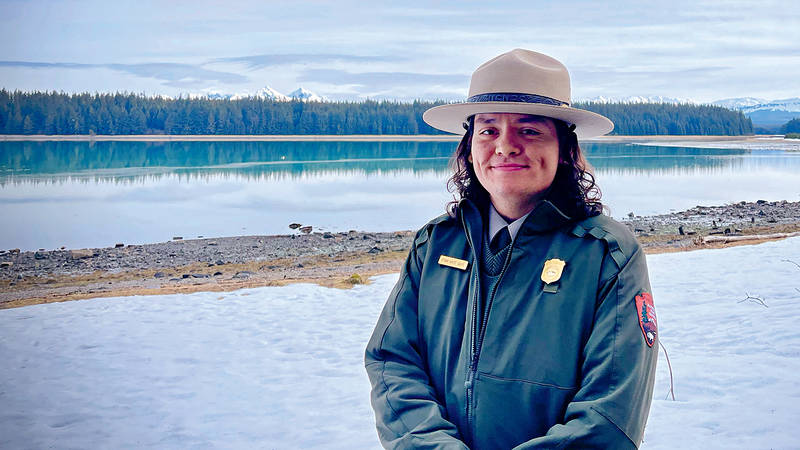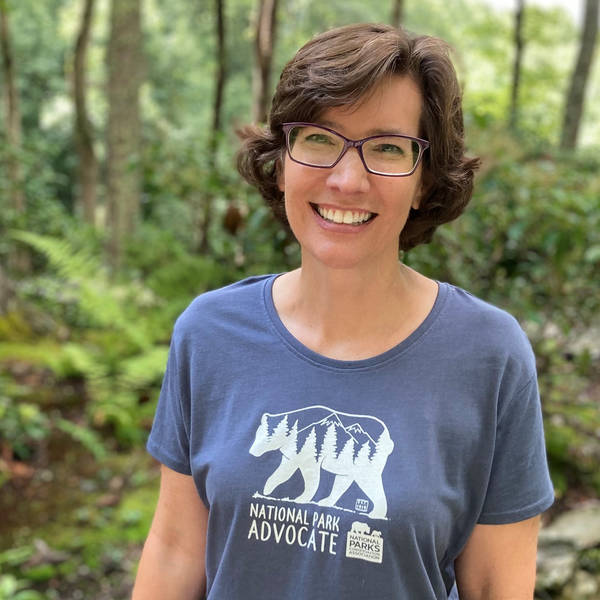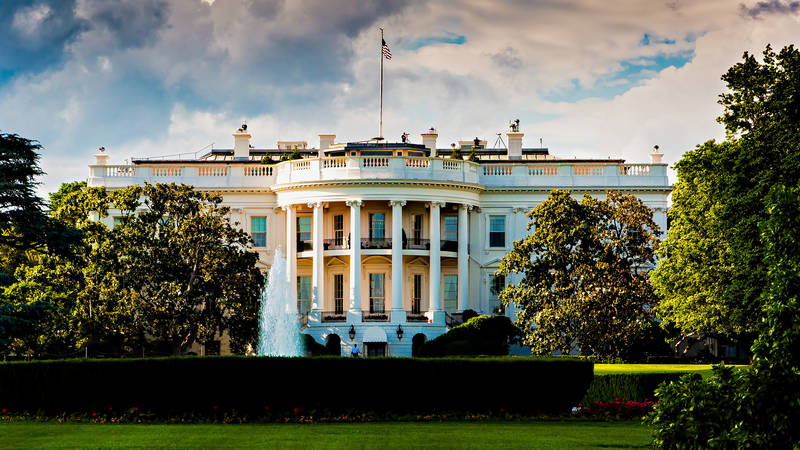These structures once dotted a large section of North America. Most have been lost over the past 150 years, but the National Park Service preserves and interprets some of those that remain.
Earthworks created by Indigenous people of North America once covered much of the eastern half of the United States, especially along rivers and streams, and extended into Illinois, Iowa, southern Wisconsin and southeastern Minnesota. The mounds were used for ceremony, burial and other sacred practices — some were constructed low, just three to four feet high, while others reached 100 feet or more.
Most of these mounds were lost over the past 150 years due to farming and development, but three sites managed by the National Park Service are solely dedicated to preserving and interpreting such earthworks. Hopewell Culture National Historical Park in Ohio, Ocmulgee Mounds National Historical Park in Georgia and Effigy Mounds National Monument in Iowa give visitors a glimpse into our continent’s earliest residents and their cultural practices. Several state parks and Tribal parks also contain and preserve mounds, as do other National Park System sites such as Chaco Culture National Historical Park in New Mexico and the Natchez Trace Parkway in Mississippi, Alabama and Tennessee.
Mounds are still considered sacred by many people. Visitors are asked to respect the land by walking around the mounds rather than on them.
Here are three specific sites to learn about these fascinating structures.
Hopewell Culture National Historical Park, Ohio
Two thousand years ago, Ross County in south-central Ohio may have been the most important cultural center in eastern North America, as evidenced by a series of ceremonial mounds built and used by the Hopewell culture. This park preserves many of these mounds at six separate sites.
Scientists believe the earthen landscapes were designed to align with the cyclical movements of the sun and moon, linking people with the order or rhythms of the cosmos. The mounds are believed to have been used for feasts, funerals and rites of passage, not as part of villages.

One Park’s Horrific Past
A century ago, a site with Native American earthen mounds became a hotspot of the Spanish flu pandemic.
See more ›The Hopewell culture is named after Capt. Mordecai Hopewell, on whose farm many of these mounds were discovered. The name describes a network of economic, political and spiritual practices among different Native American groups who thrived here between 200 BCE to 500 CE.
Archaeologists don’t know what these people may have called themselves. Their culture likely stretched from the Atlantic coast to the Rocky Mountains, explaining the presence of materials such as obsidian, copper, marine shells, shark teeth and mica found at the earthworks. The mounds were first excavated in 1891.
One of six locations park visitors can explore is Mound City Group, so named because of its 25 mounds encircled by a low earthen wall. It is the only fully restored Hopewell earthwork complex, with restorations based on the mound’s intact layers and extensive documentation and field research. Mounds were built using layers of clay, sand and gravel and would have taken decades or centuries to construct.
Originally established as Mound City Group National Monument in 1923 by President Warren G. Harding, the site was expanded and renamed Hopewell Culture National Historical Park in 1992. Since 2023, the park has been part of a UNESCO World Heritage site.
How to get there: The park’s visitor center is located in Chillicothe, Ohio, about 55 miles south of Columbus. Use the Park Service’s driving map to explore the six earthwork sites that make up the park.
Effigy Mounds National Monument, Iowa
Effigy means “in the shape of,” and at this national monument, many of the 200 mounds are in the shape of animals: birds, bear, deer, bison, lynx, turtle and panther.
The Effigy Moundbuilders, as they are known, built the mounds of earth about 800 to 1,600 years ago in the Upper Mississippi River Valley. The mounds’ exact purpose remains a mystery, but they are believed to reflect the spiritual beliefs and ceremonial traditions of this hunter-gatherer culture.
In this part of northeastern Iowa, western prairies meet eastern forests. The monument protects upland and wetland habitats, and this merging of environments supports diverse animal life.

We’re Still Here
Every national park site sits on ancestral lands. So what does it mean to be a Native American working for the Park Service today?
See more ›Today, 20 Tribes are culturally associated with this park site. Within a few years of the national monument being established in 1949 by President Harry S. Truman, the emphasis of the Park Service turned away from excavating the mounds, a practice that could reduce or destroy their value, and toward preserving and interpreting the story of the peoples who built them as a sacred landscape.
Effigy Mounds National Monument consists of two units: a main section near the visitor center and a smaller unit about 10 miles south. To view the mounds, visitors walk along accessible trails or take extended walks along steep hiking trails.
How to get there: The monument is located on Hwy 76 between Harpers Ferry and Marquette, Iowa. Guided tours and ranger programs are offered in the summer.
Ocmulgee Mounds National Historical Park, Georgia
Ocmulgee Mounds National Historical Park brings together the history of cultures that have lived alongside the Ocmulgee River for more than 12,000 years, beginning with nomadic people who hunted Ice Age mammals. The Archaic culture thrived here for thousands of years, followed by the Woodland Indians.
More than 1,000 years ago, the Mississippians — so called because archaeologists think their way of life originated in the Mississippi River Valley — began building earth mounds, many of which visitors can explore at the park site today. They built some mounds as flatforms for wooden buildings, others for burials. The large village occupying this site eventually waned around 1200.

Protecting the Homeland
Former Principal Chief James Floyd of the Muscogee (Creek) Nation speaks about his connection to Ocmulgee Mounds National Historical Park and the need to further preserve the site.
See more ›When European explorers arrived around 1600, survivors of the neighboring Indigenous cultures and their descendants formed groups known to the early English settlers as the Ochese Creeks and known today as Muscogee. The Muscogee Nation is the fourth largest federally recognized Tribe in the United States and calls this land their ancestral homeland.
Visitors to this park site, which was established in 1936, can see archaeological artifacts, explore seven burial and ceremonial mounds, including an earth lodge with the original 1,000-year-old clay floor, and see the outline of a British trading post. Walking the park site’s trails and fishing along the banks of the Ocmulgee River are popular activities. Each September, the park site hosts the Ocmulgee Indigenous Celebration, one of the largest events of Southeastern Native American culture, featuring traditional crafts, storytelling, music and dance.
NPCA, the Muscogee Nation and other groups have worked for decades to preserve the area, with members of Congress advancing a bipartisan bill to expand the park site’s boundaries and upgrade its designation to Ocmulgee National Park and Preserve. A data center approved by local officials in September, however, could threaten that expanded area, its cultural resources and wildlife.
How to get there: The site is located in Macon, about a 90-minute drive southeast from Atlanta.
Stay On Top of News
Our email newsletter shares the latest on parks.
About the author
-
 Linda Coutant Staff Writer
Linda Coutant Staff WriterAs staff writer on the Communications team, Linda Coutant manages the Park Advocate blog and coordinates the monthly Park Notes e-newsletter distributed to NPCA’s members and supporters. She lives in Western North Carolina.


